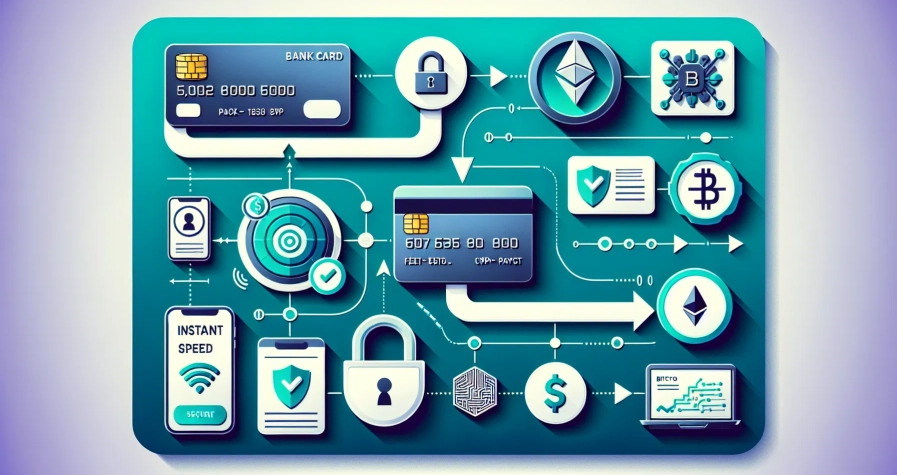The crypto world is packed with digital assets, but not all tokens are created equal. While some serve as investments or currencies, utility tokens are the workhorses of blockchain ecosystems,digital keys that unlock access to services, pay transaction fees, and fuel decentralized applications. Among them, BNB (Binance Coin) has emerged as a heavyweight, powering one of the world’s most active crypto platforms.
But how does BNB stack up against the competition? Whether you’re trying to decide which token to use for DeFi, exploring blockchain development, or simply looking to minimize transaction costs, understanding the differences between BNB and other utility tokens can save you time, money, and frustration. This guide breaks down what makes utility tokens tick, where BNB shines, and how it compares to alternatives like Ethereum’s ETH and emerging contenders.
Key Takeaways
- BNB offers transaction fees around $0.10 with 3-second confirmations, making it ideal for users prioritizing cost efficiency and speed.
- Utility tokens like BNB and ETH serve specific functions within blockchain ecosystems, including paying transaction fees, accessing services, and powering decentralized applications.
- BNB vs other utility tokens comes down to trade-offs: BNB excels in affordability and Binance integration, while Ethereum leads in ecosystem size and decentralization.
- Both BNB and ETH use deflationary burn mechanisms—BNB through quarterly scheduled burns and ETH through continuous transaction-based burns via EIP-1559.
- Choosing the right utility token depends on your priorities: select BNB for frequent low-cost transactions, ETH for ecosystem breadth, or specialized tokens like Filecoin for niche use cases.
- Many crypto users benefit from holding multiple utility tokens and using each where it provides the most value rather than committing to a single ecosystem.
Understanding Utility Tokens in the Crypto Ecosystem
Utility tokens represent a distinct category in the blockchain universe. Unlike securities or traditional cryptocurrencies designed for value storage, these tokens exist to serve specific functions within their native ecosystems.
What Makes a Token a Utility Token?
A utility token is essentially a digital access pass,it grants holders the ability to interact with a blockchain platform or decentralized application. Think of it as the arcade tokens you’d buy to play games, except these work across sophisticated digital networks.
Utility tokens don’t confer ownership rights in a company or promise profit-sharing. Instead, they provide tangible benefits:
- Fee discounts: Users can pay reduced rates for transactions or services within a platform
- Access rights: Tokens unlock premium features, exclusive content, or participation in governance decisions
- Service payments: They function as the native currency for specific blockchain operations
This functional design distinguishes utility tokens from security tokens, which represent investment contracts and come with regulatory obligations.
The Role of Utility Tokens in Blockchain Networks
Utility tokens aren’t just convenient,they’re fundamental to how many blockchain ecosystems operate. They create economic incentives that keep networks running smoothly and encourage user participation.
Here’s how they work within blockchain networks:
Transaction fees form the most basic function. Every time someone deploys a smart contract, transfers assets, or interacts with a decentralized application, they pay a small amount in the network’s utility token. These fees compensate validators or miners who process transactions and maintain network security.
Access control is another critical role. Many platforms require users to hold or stake utility tokens to access advanced features. Decentralized autonomous organizations (DAOs) often require token holdings for voting rights, ensuring that those with skin in the game shape platform decisions.
Ecosystem incentives drive growth and adoption. Projects distribute utility tokens as rewards for early adopters, liquidity providers, or community contributors. This approach bootstraps network effects,as more users join, the platform becomes more valuable, attracting even more participants.
Utility tokens also help projects maintain economic sovereignty. Rather than relying on external payment systems, blockchain networks create self-contained economies where the native token facilitates all activity. This design reduces friction, enhances speed, and keeps value circulating within the ecosystem.
BNB: The Binance Ecosystem Powerhouse
BNB has evolved far beyond its origins as a simple exchange token. Launched in 2017 by Binance, it now anchors one of crypto’s most comprehensive ecosystems, touching everything from centralized trading to decentralized finance.
Core Use Cases and Benefits
BNB’s versatility sets it apart. The token serves multiple functions across Binance’s sprawling platform:
Trading fee discounts remain a cornerstone benefit. Users who pay Binance trading fees with BNB receive substantial reductions,typically around 25%,making it attractive for active traders who process high volumes.
Gas fees on BNB Chain represent another major use case. Anyone deploying smart contracts, minting NFTs, or interacting with decentralized applications on BNB Chain pays transaction costs in BNB. At roughly $0.10 per transaction with 3-second confirmation times, it’s become a go-to network for users frustrated by Ethereum’s congestion.
DeFi participation expands BNB’s utility further. The token is accepted across hundreds of decentralized exchanges, lending protocols, and yield farming platforms built on BNB Chain. Users can stake BNB to earn passive income or provide liquidity to trading pools.
NFT marketplace access rounds out the ecosystem. Binance’s NFT platform accepts BNB for purchases, minting fees, and royalty payments, connecting the token to the booming digital collectibles market.
Binance’s token burn mechanism adds a deflationary twist. The company regularly destroys BNB tokens based on trading volume, permanently removing them from circulation. This quarterly burn will continue until 50% of the total supply (100 million BNB) is eliminated, creating long-term scarcity pressure.
BNB Chain and Smart Contract Functionality
BNB operates across a multi-chain architecture that balances speed, functionality, and compatibility. The BNB Chain (formerly Binance Smart Chain) runs parallel to the original Binance Chain, each serving distinct purposes.
EVM compatibility is perhaps BNB Chain’s most strategic feature. By supporting the Ethereum Virtual Machine, it allows developers to port Ethereum-based applications with minimal code changes. This design choice dramatically lowered the barrier for projects looking to escape Ethereum’s high fees while maintaining access to familiar development tools.
Fast, affordable transactions define the user experience. BNB Chain achieves roughly 3-second block times through a Proof of Staked Authority consensus mechanism. While this approach sacrifices some decentralization,the network relies on 21 validators rather than thousands,it delivers predictable performance that users can count on.
The multi-chain setup enables Binance to offer specialized functionality. The original Binance Chain handles rapid, simple transactions ideal for token transfers, while BNB Chain supports complex smart contracts for DeFi, gaming, and other applications requiring computational flexibility.
This architecture positions BNB as a bridge between centralized and decentralized crypto,users enjoy the speed and polish of Binance’s centralized exchange alongside the permissionless innovation of its blockchain networks.
Leading Alternative Utility Tokens
BNB faces competition from established giants and emerging challengers, each bringing unique strengths to the utility token landscape.
Ethereum’s ETH: The Pioneer Smart Contract Platform
Ethereum’s ETH remains the undisputed heavyweight of utility tokens. Since launching smart contract functionality in 2015, Ethereum has become the foundation for decentralized finance, NFTs, and most blockchain innovation.
Ecosystem dominance is Ethereum’s greatest asset. The network hosts thousands of decentralized applications, commanding the lion’s share of total value locked in DeFi protocols. Developers flock to Ethereum because that’s where the users, liquidity, and infrastructure already exist,a network effect that’s proven incredibly difficult for competitors to overcome.
Developer resources and tooling on Ethereum are unmatched. Years of community building have produced extensive documentation, battle-tested frameworks like Hardhat and Truffle, and a deep talent pool familiar with Solidity programming. This mature ecosystem accelerates development and reduces the risk of critical bugs.
But, transaction fees remain problematic. During periods of high demand, gas fees can spike to $20, $50, or even higher for a single transaction. Layer 2 solutions like Arbitrum and Optimism have emerged to address this, but they add complexity and fragment liquidity.
Ethereum’s transition to Proof of Stake brought another interesting change: EIP-1559’s burn mechanism. A portion of each transaction fee is now permanently destroyed, making ETH mildly deflationary during periods of high network usage. This creates interesting economic dynamics that blend utility token functions with store-of-value characteristics.
Other Notable Utility Tokens Worth Considering
Beyond the BNB-ETH rivalry, several utility tokens serve specialized niches or present compelling alternatives.
Filecoin (FIL) powers decentralized storage networks. Users pay FIL to store data across distributed nodes, while storage providers earn FIL for hosting files. This creates a marketplace for unused hard drive space, offering an alternative to centralized cloud storage providers. The token’s utility is tightly bound to a specific, real-world use case rather than general-purpose smart contracts.
Toncoin (TON) has emerged as a low-fee competitor with growing DeFi and social application integrations. Originally developed by the team behind Telegram, TON offers transaction costs comparable to BNB with an emphasis on user-friendly interfaces. Its ecosystem is still developing, but the network’s speed and messaging app integrations position it as an interesting dark horse.
Solana’s SOL deserves mention for its extremely high throughput and low fees, though it operates in a slightly different category given its more decentralized validator set compared to BNB Chain.
Each of these alternatives targets different trade-offs in the blockchain trilemma of decentralization, security, and scalability. Your choice depends heavily on which factors matter most for your specific use case.
Key Differences Between BNB and Competing Tokens
Understanding how BNB stacks up against alternatives requires looking beyond surface-level features to the fundamental trade-offs each network makes.
Transaction Speeds and Fees
This is where BNB shines brightest. With transaction costs around $0.10 and confirmations in roughly 3 seconds, BNB Chain delivers predictable, affordable performance. For users making frequent transactions,swapping tokens, claiming rewards, or minting NFTs,these costs add up to significant savings.
Ethereum presents a stark contrast. Base layer transactions fluctuate wildly based on network congestion, sometimes reaching double digits or higher during peak periods. Layer 2 solutions improve this substantially, bringing costs down to a few dollars or less, but they require bridging assets and navigating a more complex user experience.
The speed difference matters too. Ethereum’s 12-15 second block times feel sluggish compared to BNB Chain’s near-instant confirmations, especially for applications requiring rapid feedback like gaming or real-time trading.
Ecosystem Size and Developer Activity
Here’s where Ethereum pulls ahead. The network hosts the broadest collection of decentralized applications, the deepest liquidity pools, and the most active developer community. If you’re looking for cutting-edge DeFi protocols, experimental NFT projects, or innovative governance mechanisms, you’ll likely find them first on Ethereum.
BNB Chain’s EVM compatibility helps it punch above its weight. Developers can deploy Ethereum code with minimal modifications, allowing BNB to capture projects seeking lower fees without rebuilding from scratch. The ecosystem has grown impressively, with hundreds of dApps now operating on BNB Chain.
But, BNB’s relative centralization affects its appeal to developers prioritizing decentralization. With only 21 validators compared to Ethereum’s thousands, BNB Chain’s security model depends more heavily on Binance’s reputation and infrastructure. Some projects view this as unacceptable for applications requiring maximum censorship resistance.
Token Economics and Burn Mechanisms
Both BNB and ETH have implemented deflationary mechanisms, but they work quite differently.
BNB’s quarterly burns are predictable, scheduled events. Binance commits to destroying tokens based on trading volume until half the original supply is eliminated. This creates clear, long-term scarcity that holders can anticipate.
Ethereum’s EIP-1559 burns happen continuously with every transaction. The base fee portion of gas costs is permanently removed from circulation. Unlike BNB’s fixed schedule, ETH’s burn rate fluctuates with network usage,during busy periods, Ethereum becomes deflationary, while quiet times see modest inflation from staking rewards.
These mechanisms affect how traders and investors perceive each token’s value proposition. BNB’s burns are straightforward supply reduction, while ETH’s model ties deflation directly to network utility and adoption.
Which Utility Token Fits Your Needs?
Choosing between utility tokens isn’t about finding the “best” option,it’s about matching features to your specific priorities and use cases.
Go with BNB if you’re focused on cost efficiency and frequent transactions within the Binance ecosystem. Active traders benefiting from fee discounts, DeFi users making multiple daily transactions, or developers building applications where low gas fees are critical will find BNB’s value proposition compelling. The tight integration with Binance’s centralized exchange also matters if you regularly move assets between on-chain and off-chain environments.
Choose ETH when ecosystem breadth, innovation, and decentralization top your list. If you need access to the widest range of DeFi protocols, want exposure to cutting-edge blockchain experiments, or prioritize censorship resistance, Ethereum remains the gold standard. The higher fees are the price of admission to crypto’s most developed ecosystem.
Consider alternatives for specialized needs. Filecoin makes sense if decentralized storage is your focus. TON might appeal if you value simplicity and emerging social integrations. Each niche token optimizes for specific use cases rather than trying to be everything to everyone.
Factors to Consider Before Choosing
Several dimensions should inform your decision:
Transaction costs and speed directly impact user experience. If you’re making dozens of small transactions, BNB’s low fees save real money. For occasional, high-value operations, Ethereum’s higher costs become less significant.
Ecosystem and developer support determine what’s actually possible on each platform. Check whether the applications, protocols, or services you need exist on your chosen network. Liquidity depth matters too,major tokens trade with tighter spreads and less slippage on Ethereum than alternatives.
Governance and decentralization affect long-term risk. More centralized networks like BNB Chain can move faster and offer better performance but depend on smaller validator sets. Decentralized networks provide stronger censorship resistance but sometimes sacrifice speed and cost efficiency.
Long-term utility and regulatory considerations shouldn’t be ignored. How does each token’s design align with evolving regulations? What happens if a centralized entity behind a token faces legal challenges? Consider how token utility might expand or contract as the crypto landscape matures.
Your ideal choice might involve using multiple utility tokens. Many crypto users hold both BNB and ETH, using each where it provides the most value. There’s no rule requiring allegiance to a single ecosystem.
Conclusion
The utility token landscape offers diverse options, each optimizing for different priorities. BNB delivers exceptional value for users prioritizing low fees, fast transactions, and deep integration with Binance’s comprehensive platform. Its aggressive token burns and multi-chain architecture create a compelling package for cost-conscious crypto users.
Ethereum maintains its position as the most versatile, innovative platform with the largest developer community and application ecosystem. The trade-off of higher fees buys access to unmatched depth and decentralization.
Your choice eventually hinges on what matters most: minimizing transaction costs, maximizing ecosystem options, or prioritizing specific features like decentralization or specialized functionality. Many users find value in both worlds, holding multiple utility tokens and using each where it excels.
As blockchain technology matures, expect these ecosystems to continue evolving. Fee structures will change, new competitors will emerge, and cross-chain bridges will make it easier to move between networks. The utility token you choose today doesn’t lock you into a permanent decision,but understanding the trade-offs helps you make smarter choices about where to deploy your time and resources in crypto’s dynamic landscape.
Frequently Asked Questions
What is the main difference between BNB and ETH as utility tokens?
BNB offers lower transaction fees (around $0.10) and faster confirmations (3 seconds) but is more centralized with 21 validators. ETH provides a larger ecosystem with thousands of dApps and stronger decentralization but has higher, fluctuating gas fees that can reach double digits during peak periods.
How does BNB’s token burn mechanism work?
Binance conducts quarterly BNB burns based on trading volume, permanently destroying tokens from circulation. This process will continue until 50% of the total supply (100 million BNB) is eliminated, creating long-term scarcity and deflationary pressure on the token.
What are the benefits of using BNB for transactions on Binance?
BNB holders receive approximately 25% trading fee discounts on Binance when paying fees with the token. Additionally, BNB serves as the gas fee currency on BNB Chain for smart contracts and DeFi applications, with transaction costs around $0.10 and near-instant confirmations.
Can you use Ethereum-based applications on BNB Chain?
Yes, BNB Chain is EVM-compatible, meaning developers can port Ethereum-based applications with minimal code changes. This compatibility allows users to access familiar dApps while benefiting from BNB Chain’s lower fees and faster transaction speeds compared to Ethereum’s mainnet.
Are utility tokens considered securities or investments?
No, utility tokens are not designed as securities. They don’t confer ownership rights or promise profit-sharing. Instead, utility tokens provide functional access to blockchain services, fee discounts, governance participation, and service payments within their native ecosystems.
Which utility token is better for DeFi applications with frequent transactions?
For frequent DeFi transactions, BNB typically offers better cost efficiency with predictable low fees around $0.10 per transaction. However, Ethereum provides access to a broader range of DeFi protocols with deeper liquidity, making the choice dependent on whether cost or ecosystem breadth matters more.



